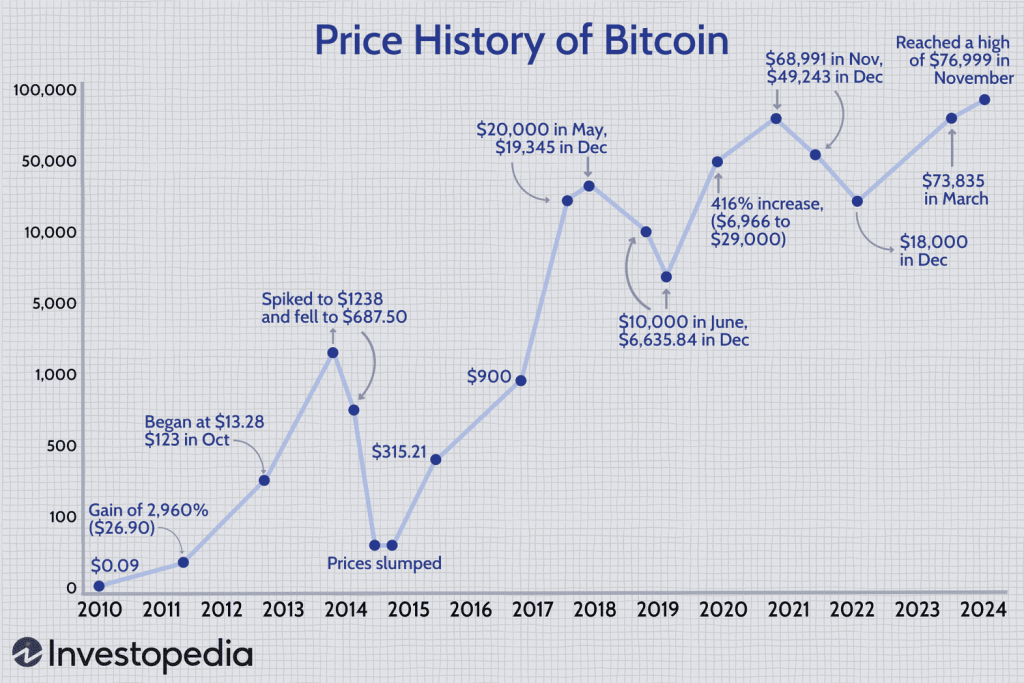Key Highlights:
- Blum video code December 23-24: “History of Bitcoin Blum Code”, Answer: BIGPIZZA
- Blum video code December 26: “Future of Telegram. Part 1 Blum Code”, Answer: TAPBLUM
- Blum video code December 25: “Blum COO @ Blockchain Life Blum Code”, Answer: LIFEISBLUM
- Dec 20 News Blum Code: Trump
- Blum video code December 21: “What is Uniswap Blum Code”, Answer: BLUMSHINE

History of Bitcoin Blum Code December 24
On December 23, Blum Academy unveiled the video “The Evolution of Bitcoin: From Whitepaper to Global Asset”, which explores Bitcoin’s remarkable journey from its inception as a nine-page whitepaper to its emergence as the leading cryptocurrency. History of Bitcoin Blum video Duncovers how Satoshi Nakamoto’s vision disrupted traditional finance, empowering millions, and traces Bitcoin’s fascinating history, including the famous first pizza transaction and its rise to a $90,000+ asset. It also highlights why Bitcoin’s decentralization and scarcity make it the “cool kid” of the financial world and how its success has inspired the creation of other major cryptocurrencies like Ethereum, Solana, and Litecoin.
History of Bitcoin Blum Code Task:
🎬Video: History of Bitcoin Blum Code
✅Blum Code: BigPizza

Contents
What is Bitcoin?
Bitcoin is a digital currency that operates independently of central authorities like banks or governments. It relies on blockchain technology, a decentralized ledger that records transactions securely and transparently. Bitcoin enables peer-to-peer transactions, allowing users to send and receive funds directly without intermediaries. This makes Bitcoin a revolutionary alternative to traditional financial systems.
Bitcoin’s decentralized nature ensures that no single entity controls it. Instead, transactions are validated by a network of computers, known as miners. This system guarantees security, transparency, and censorship resistance, making Bitcoin a popular choice for those seeking financial independence and protection against inflation.
Who Invented Bitcoin and Why?
Bitcoin was invented by an anonymous individual or group under the pseudonym Satoshi Nakamoto. In 2008, Nakamoto published a whitepaper titled Bitcoin: A Peer-to-Peer Electronic Cash System, outlining the vision for a decentralized digital currency that could operate without the need for intermediaries like banks or governments. Nakamoto’s motivation was to create an alternative financial system that could offer greater transparency, security, and independence from traditional centralized institutions, particularly in the aftermath of the 2008 global financial crisis.

The identity of Satoshi Nakamoto remains a mystery, with several theories suggesting that Nakamoto could be an individual, a group of developers, or even a government entity. Despite the anonymity, Nakamoto’s creation has sparked a global movement, revolutionizing finance and paving the way for the creation of thousands of cryptocurrencies.
What is the Maximum Supply of Bitcoin?
One of the most unique aspects of Bitcoin is its fixed supply. Bitcoin has a maximum supply of 21 million coins, a limit hardcoded into its protocol. This means that no more than 21 million Bitcoins will ever be mined, making Bitcoin a deflationary asset. The finite supply is a key reason why Bitcoin is often referred to as “digital gold”—just like gold, it is scarce and cannot be inflated by central banks printing more currency.
The limited supply has led to Bitcoin’s growing status as a store of value, especially in an era of increasing economic uncertainty and inflation. As of now, over 19 million Bitcoins have been mined, with the remaining supply to be gradually released through a process called “halving,” which reduces the mining reward approximately every four years.
When Did Bitcoin Hit $1 for the First Time?
Bitcoin’s first notable price milestone came in 2011, when it reached $1 for the first time. Prior to this, Bitcoin had been valued at less than a cent, and it was primarily used by early adopters, tech enthusiasts, and cryptographers. Bitcoin’s price hit $1 in 2011, signaling its potential as a viable digital asset. This event marked a turning point in Bitcoin’s evolution, with growing interest from the broader public and a surge in media coverage.
From that moment, Bitcoin began to capture the attention of more investors and media outlets, which fueled its price growth over the years. Bitcoin’s rise from just a few cents to over $1,000 in 2013 demonstrated its resilience and potential, eventually reaching new all-time highs as its adoption grew.
Bitcoin Price History

History of Bitcoin Blum Code on WEEX
WEEX is gaining recognition as an excellent crypto exchange for beginners due to its user-friendly platform, security measures, and extensive educational resources. Whether you’re a beginner or a seasoned trader, WEEX offers a seamless trading experience with support for various cryptocurrencies, including BTCUSDT, ETH/USDT, DOGE/USDT, XRP/USDT, WXT/USDT SOL/USDT and other numerous altcoins. Beyond trading, WEEX is dedicated to educating its users, making it a trusted resource for those looking to stay informed in the fast-paced world of crypto.
Staying Informed: History of Bitcoin Blum Code Updates on WEEX
Crypto in Everyday Life Blum Code 17 December: What are Crypto Debit Cards?
Crypto Slang. Part 5 Blum Code 18-19 December: Shilling, Normies, NGMI & WAGMI Explained
Blum CMO @ Blockchain Life Blum Code: Blockchain Life in 2024
All Blum Verify Code Summary: DEX History #3 Blum Code December 12-13 Updated
